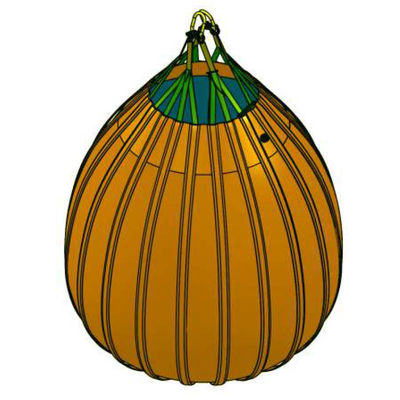Pillow Shape Underwater Lift Bags Inflatable Flat Rescue Air Lifting Bag
Description
Underwater lift bags are essential tools used in various marine and underwater applications to provide buoyancy and facilitate the lifting of submerged objects. Made from durable materials such as PVC and nylon, these bags are designed to withstand harsh underwater conditions and can lift weights ranging from a few kilograms to several tons, depending on their size and design. They work by being inflated with air, creating buoyancy that allows them to lift heavy items like salvage equipment, sunken vessels, and construction materials to the surface. Whether utilized in commercial diving, salvage operations, or underwater construction, lift bags are invaluable for safely retrieving items from depths and managing underwater tasks efficiently.


Specifications
| Product Name |
Underwater Lift Bags |
| Raw Material |
TOP Grade PVC Coating Fabric |
| Type |
Pillow |
| Size |
500kg, 1000kg, 5000kg 10000kg,etc |
| Thickness |
0.4-1.2mm, or as request |
| Color |
Yellow,Blue,Black, etc |
| Density |
0.33-0.9g/cm3 |
| Safety Factor |
7:1 |
| Accessories |
Valve, Inflatable Tube, Repair Material |
| OEM |
Welcome |
| Warranty |
3 Years |
|
Tolerances
|
+/- 0.03 on densities
+/- 0.2 mm on thickness
+/- 0 to +3mm on width
+/- 0 to +3mm on length
|
|
Model
|
Capacity
|
Length
|
Width
|
|
Pillow
|
[kg]
|
[lbs]
|
[mm]
|
[mm]
|
| HM-ULB100 |
100 |
220 |
1,020 |
760 |
| HM-ULB250 |
250 |
550 |
1,320 |
820 |
| HM-ULB500 |
500 |
1,100 |
1,300 |
1,200 |
| HM-ULB1000 |
1,000 |
2,200 |
1,550 |
1,420 |
| HM-ULB2000 |
2,000 |
4,400 |
1,950 |
1,780 |
| HM-ULB3000 |
3,000 |
6,600 |
2,900 |
1,950 |
| HM-ULB5000 |
5,000 |
11,000 |
3,230 |
2,030 |
| *Note: Other sizes can be customized according to the requirements. |
Features
Heavy Duty Construction
Made from high-strength, puncture-resistant materials, our lift bags can withstand the rigors of repeated use and harsh underwater environments.
Advanced Buoyancy Technology
Our proprietary buoyancy system ensures consistent and predictable lift performance, even in challenging water conditions.
High Precision Inflation Control
The advanced inflation mechanism allows for precise control over air flow and pressure, ensuring accurate and safe lifting operations.
Multiple Attachment Points
Our lift bags feature multiple secure attachment points, ensuring a stable and reliable connection to lifting equipment.
Applications
● Salvage Operations
● Underwater Construction
● Marine Recovery Missions
● Pipeline Installation and Maintenance
Advantages
Over 30 Years of Expertise
With three decades of specialized manufacturing experience, our team brings unmatched knowledge and skills to the production of Underwater Air Lift Bags.
Cutting-Edge Technology
We utilize the latest manufacturing techniques and materials to ensure our lift bags provide maximum performance and reliability.
Customized Solutions
We offer tailored designs and specifications to meet the unique requirements of various underwater applications, ensuring optimal functionality.
Stringent Quality Control
Our rigorous quality assurance processes ensure that every lift bag meets high standards for safety and durability before it reaches our customers.

FAQ
1. What is an underwater lift bag?
An underwater lift bag is a device used underwater to lift objects or equipment to the surface.
2. How does an underwater lift bag work?
An underwater lift bag works by filling with air, which creates buoyancy and allows the bag to lift objects to the surface.
3. What are underwater lift bags made of?
Underwater lift bags are typically made of durable materials such as PVC, nylon, or polyurethane.
4. How much weight can an underwater lift bag lift?
The lifting capacity of an underwater lift bag can vary depending on its size and design, but they are available in a range of capacities from a few kilograms to several tons.

 Your message must be between 20-3,000 characters!
Your message must be between 20-3,000 characters! Please check your E-mail!
Please check your E-mail!  Your message must be between 20-3,000 characters!
Your message must be between 20-3,000 characters! Please check your E-mail!
Please check your E-mail! 














